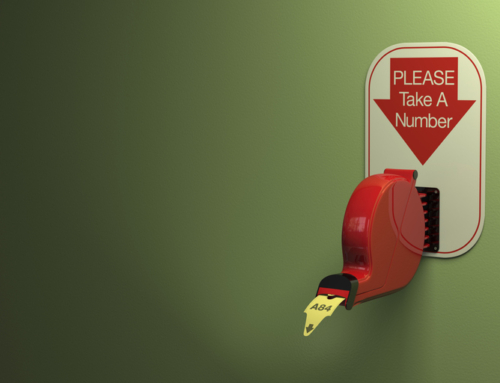As humans, we lack the ability to have inauthentic experiences. What we experience is actually happening…actually real…actually in front of us. Therefore, making it authentic. The lynchpin in all of this is whether or not we view it as authentically real or authentically fake. The difference for consumers is whether they walk away feeling happy and satisfied, or angry and deflated.
Oblige me, if you will, and take a moment to imagine something. You’re at work. It’s rolling up on the lunch hour, and it’s been a tough morning – multiple emails, phone calls, people stopping into your office – all demanding something – and you need a break. Seeing that it’s a nice day, you head outside.
Right outside of your office building is a picturesque lake with a paved walking path around it. So you go for a walk, enjoying the shade of trees along the path, the colorful landscaping, the sounds of nature around you and the sights of couples and children out of school for the summer paddle boating in the middle of the lake. The stress from your morning melts away and is replaced with happy thoughts.
Sound nice? Absolutely!
Only, what if I told you that an oasis like this exists…but it is entirely not what it seems? That the trees you enjoyed had been meticulously placed, grown, trimmed and maintained for your comfort? That the landscaping design was painstakingly chosen for color as well as designed to hide imperfections in the area such as water pipes? That the sound of nature around you was actually being artificially piped in via hidden speakers? In fact, that lake you’re walking around? Man made!
So, knowing all of this now, would you say that your experience walking around the lake outside of your office was authentic? Was it real? Was it more or less enjoyable knowing what you know now?
The answer to each of those questions, respectively, is: yes, yes, and…maybe less.
Measuring Authenticity
As humans, we lack the ability to have inauthentic experiences.
What we experience is actually happening…actually real…actually in front of us. Therefore, making it authentic. The lynchpin in all of this is whether or not we view it as authentically real or authentically fake.
In his TED talk, Joseph Pine laid out his four corners of authenticity. The chart breaks down like this:
- “Things” either are what they say the are, or they are not.
- “Things” are either true to their self or they are not.
| IS what it says it is | Real Fake | Real Real |
| Is NOT what it says it is | Fake Fake | Fake Real |
| Is NOT true to itself | IS true to itself |
My Take
The goal for your bank or credit union is to belong on the right column of that chart. You are either a “Real Real” authentic brand, or you are a “Fake Real” authentic brand. Either way, the brand, culture, marketing and strategy is always true to itself. The worst thing your brand, management, employees, etc. can do is deviate and turn into something that is not true to itself, thus unraveling the whole brand experience.
But being “Real Real” is hard. It takes a lot of work, years of careful brand cultivation and always ensuring the right people are “on the bus” when it comes to staffing your organization and maintaining a true culture.
Instead, the majority of the time, what most of us feel and what we perceive as authentic is actually manufactured happiness. It’s a fake reality. And as long as your customers or members never get that look “behind the curtain” of what goes on in the making of their experience, that’s okay.
We all know, on some level, that the person in the Mickey Mouse costume at Disney on a sweltering July day is not having the time of their life. But we will never feel that. To us, they are happy to be out entertaining in the heat and humidity. So, we don’t care. We’re still having the most magical time of our lives.
Manufactured Happiness
In this digital, customized, experience-based economy, our customers and members have come to expect transparency and perfection from us. Not to mention the rest of the brands that they interact with. It’s where the whole idea of manufactured happiness is born from.
91% of consumers today want honest information about the products and services we provide, while 63% of consumers are more likely to buy from brands that are more authentic over competing brands. If your bank or credit union is going to compete with those expectations, experiences need to both be authentic and display honesty and transparency when something inevitably goes wrong in the financial life of a customer.
Staying true to the brand and the culture of the organization is the first order of business. The moment our staff starts lying their way out of uncomfortable situations or we promote a product as something it is not, the happiness disappears. Then, we’re simply left manufacturing fake experiences that no one wants to take part in.


